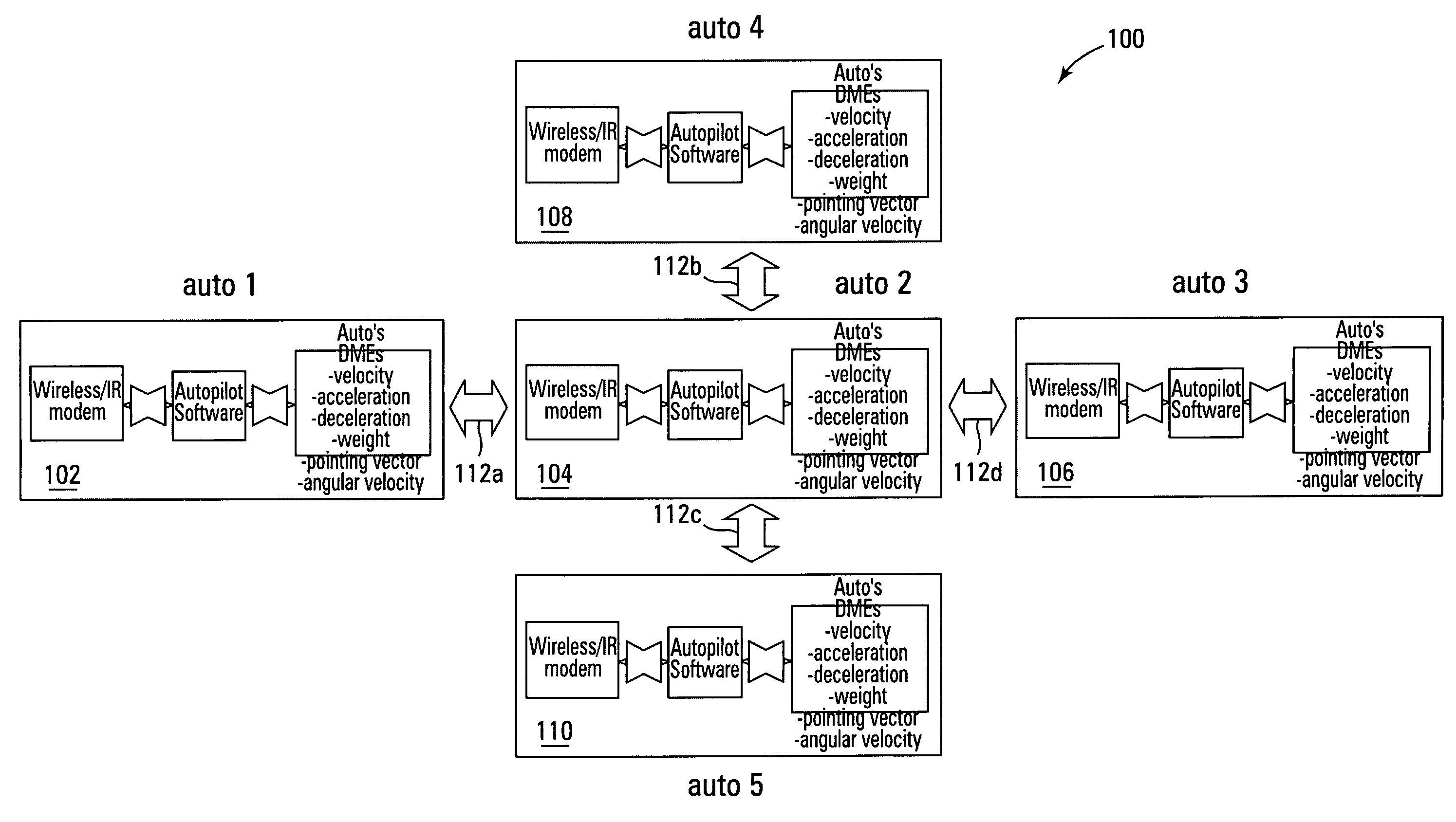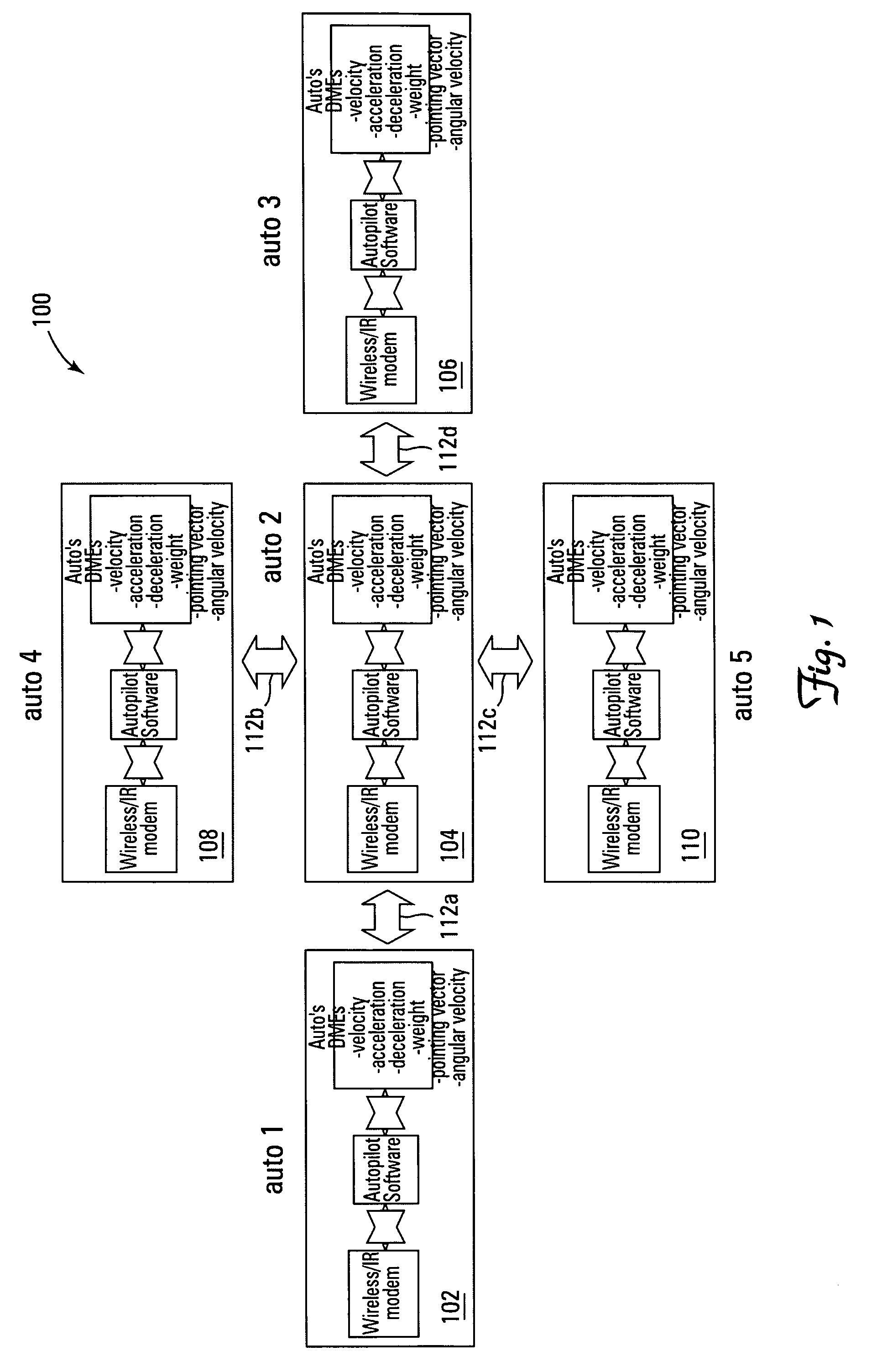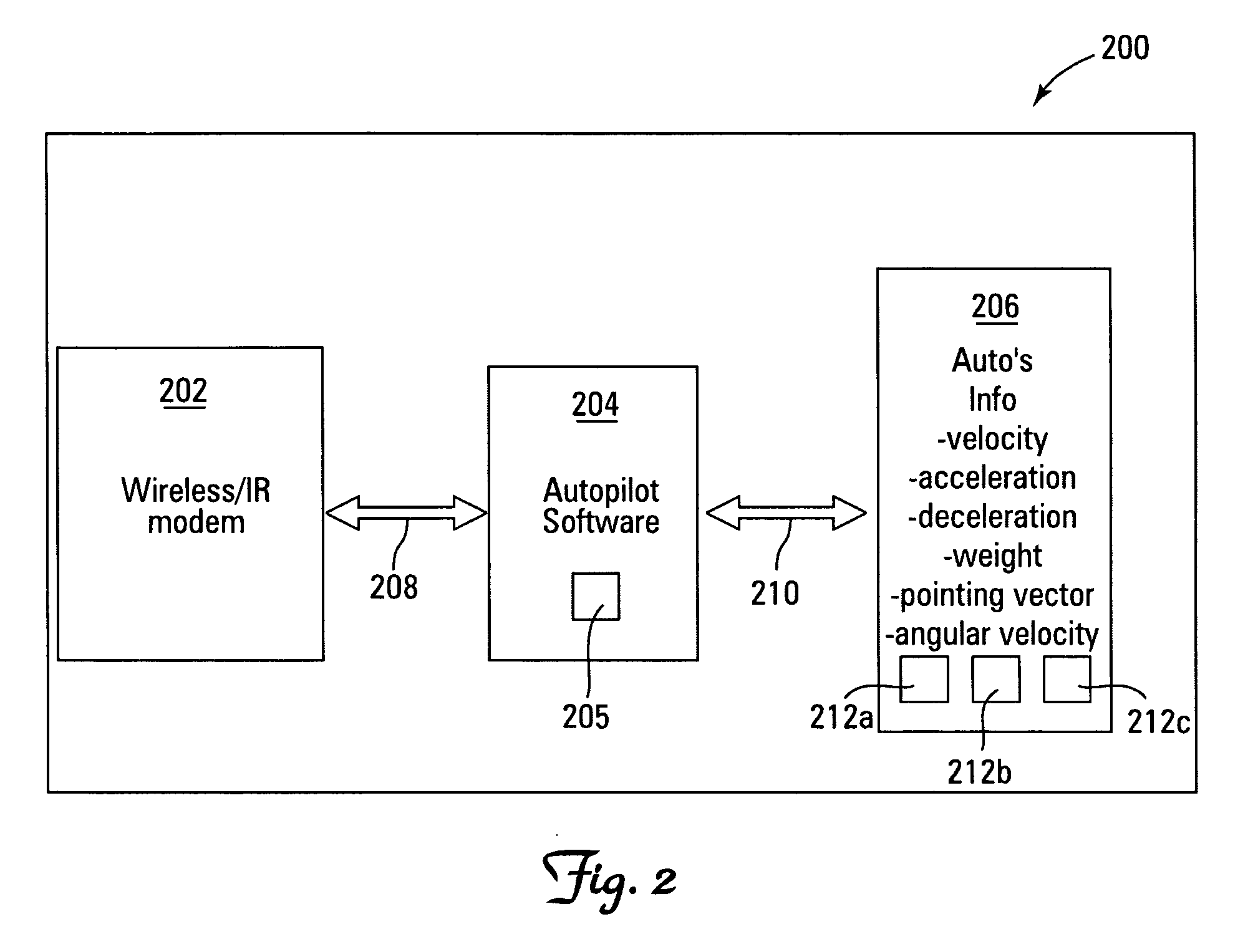System and method for controlling vehicular traffic flow
a technology of vehicular traffic and system and method, applied in the field of wireless networking, can solve the problems of traffic flow problem, traffic throughput decline, significant traffic flow problem, etc., and achieve the effect of increasing traffic throughput and safety, and reducing the distribution of vehicles
- Summary
- Abstract
- Description
- Claims
- Application Information
AI Technical Summary
Benefits of technology
Problems solved by technology
Method used
Image
Examples
Embodiment Construction
[0013] With reference now to the figures, FIG. 1 depicts a block diagram of an example system 100 for controlling vehicular traffic flow, which can be used to implement a preferred embodiment of the present invention. For this example embodiment, system 100 includes a plurality of automotive vehicles 102, 104, 106, 108, 110. Each vehicle 102-110 can communicate with at least one other vehicle 102-110 via a respective wireless communication link 112a-112d. For clarity and ease of understanding, it may be assumed that vehicles 102-110 are automobiles, but the present invention is not intended to be so limited and can include within its scope other types of vehicles that are typically arranged as queued vehicular traffic (e.g., trucks, buses, vans, motorcycles, etc.). Notably, the present invention also includes within its scope airborne vehicles (e.g., multiple aircraft flying in close formation, military aircraft flying in drone formation, etc.). Also, for this example, it may be ass...
PUM
 Login to View More
Login to View More Abstract
Description
Claims
Application Information
 Login to View More
Login to View More - R&D
- Intellectual Property
- Life Sciences
- Materials
- Tech Scout
- Unparalleled Data Quality
- Higher Quality Content
- 60% Fewer Hallucinations
Browse by: Latest US Patents, China's latest patents, Technical Efficacy Thesaurus, Application Domain, Technology Topic, Popular Technical Reports.
© 2025 PatSnap. All rights reserved.Legal|Privacy policy|Modern Slavery Act Transparency Statement|Sitemap|About US| Contact US: help@patsnap.com



